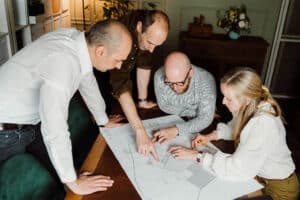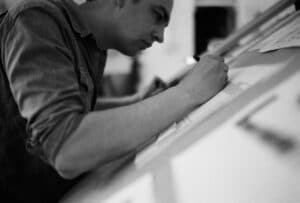Design has the power to elevate hospitality experiences from multiple perspectives – be they guests, employees or investors. However, if we get the foundations of a project or the design priorities wrong, then the outcomes can have the opposite effect and crucial benefits are lost.
Designing with a long-term mindset: repair, refurbish and reuse
One area of continual industry oversight is the lack of focus on longevity and the acceptance that interiors depreciate over time until they are worthless, irrelevant and unsalvageable. As an industry we continue to repeat the problems of failing to design with a long-term mindset, such as planning for repair, refurbishment and reuse, and creating spaces that age and enhance guest experience, rather than feeling tired, worn and in need of serious investment.
Few developers, clients or designers join the dots between poor design, waste and diminished asset value, and many interiors continue to be treated as disposable over a 7–8-year life cycle. Modern hospitality design relies on short, trend-driven refurbishment cycles, and the result is a system that burns through resources, carbon and capital. There’s a smarter way which is baked into our Studio’s design ethos: designing for longevity. It’s an approach that makes environmental sense and strong commercial sense too.
Refurbishment costs more carbon than the initial build
Globally, buildings under construction and in use are responsible for 39% of carbon emissions, and fit-out accounts for about a quarter of that total. In hotels, where interiors are refreshed every five to ten years, the impact of repeated refurbishments ultimately overtakes the emissions created from the construction of the original structure. By creating interiors that are repairable, reusable and adaptable, we can cut this waste cycle short. On a West London project, we designed spaces so they could be refurbished with minimal material loss, reducing future carbon emissions by 75%.
Designing with longevity in mind can lower future CAPEX
The commercial argument is equally compelling. Longevity doesn’t mean making things last forever but creating assets that hold value over time. A few years ago, a hotel project we worked on in Saudi Arabia was undergoing value engineering, and one area under review was the wardrobes at 1,500 USD each. Instead of lowering quality and ultimately durability and product life span, we replaced the wardrobes with high-quality purpose-built luggage racks, hooks and rails, which was still more than relevant to the clientele. We saved over 150,000 USD without compromising the guest experience, quality or long-term asset value.
Guests are looking for hotel brands who act responsibly
Designing for longevity also enhances the guest experience. Interiors that can be refurbished and enhanced to stay relevant without being wasteful. Guests sense the difference: spaces feel cared-for, not generic or worn-out. At the same time, hotels that embrace longevity signal something powerful to their audiences such as heritage, tradition and elegance. Consumers, employees and investors increasingly prioritise sustainability, with nearly four in five people changing purchasing choices as a result. By investing in quality and responsibility, hotels strengthen both their brands and their relationships.
Root design in context and culture rather than fleeting trends
For us, longevity redefines luxury. True luxury is not what’s shiny and new, but what feels relevant and valuable year after year. That means choosing materials that can be repaired or refinished, designing joinery and furniture that can be reused, and creating interiors rooted in context and culture rather than transient trends.
Hospitality design has long been associated with disposability, but it doesn’t have to be that way. Longevity is not about resisting change but enabling it intelligently. By embedding longevity into design, hotels reduce waste and carbon, protect future budgets, elevate the guest experience, and build loyalty. Great design isn’t only about how a space looks on opening day – it’s about how it performs, feels and endures over time.




